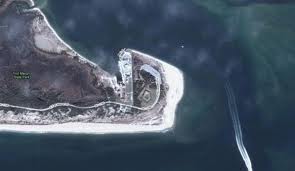
Tomorrow a bill will be introduced into the NC House that allows the use of terminal groins to protect private property along the coast, overturning the 1979 ban on hardened structures along the coast. Although NC would join all of the other eastern seaboard states in allowing such protections, the bill, if passed, would also end a long history of attempting to maintain a natural coastline. This natural coastline is why the Outer Banks have become such a popular tourist destination, bringing millions into the state economy each year.
So why might North Carolina leaders turn their back on historical decisions? This year’s General Assembly is under a new majority – for the first time since 1898, led by Republicans. Rising populations along the coast are using this as an opportunity to demand more permanent solutions to shoreline erosion. Previous strategies of beach restoration, inlet channel realignment, and sandbagging are no longer adequate to coastal property owners. However, though terminal groins may seem like an easy solution, they are not as simple as they seem at first glance. It’s these nuances that make them a really bad idea, both for maritime ecology we’ve worked so hard to protect and for the wallets of North Carolinian taxpayers.
